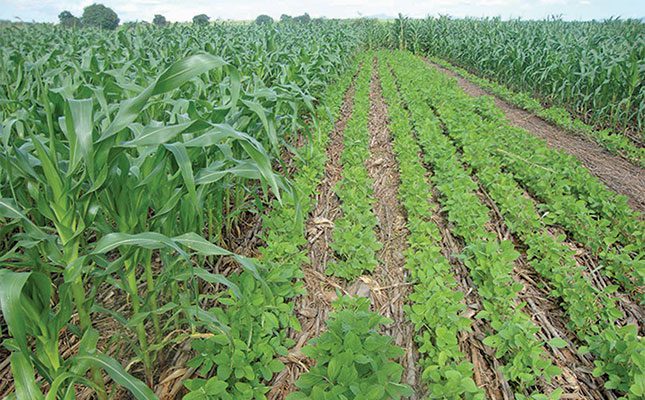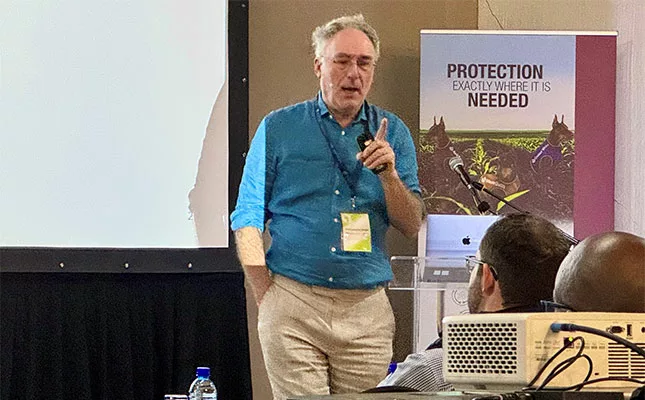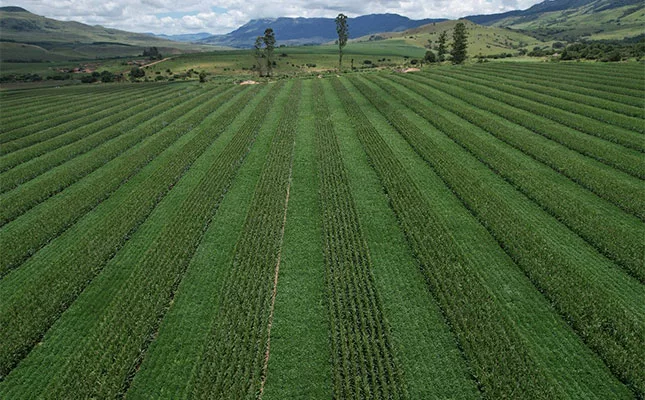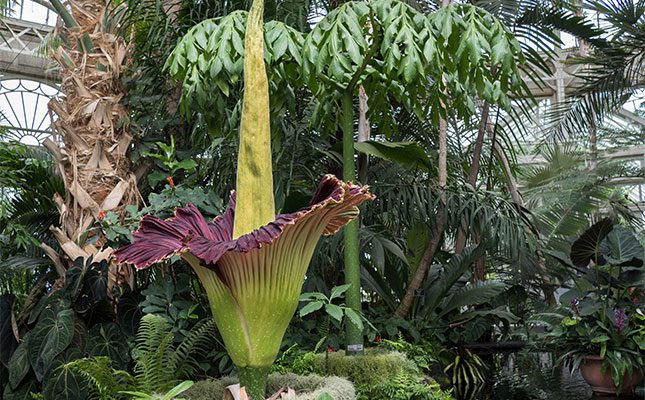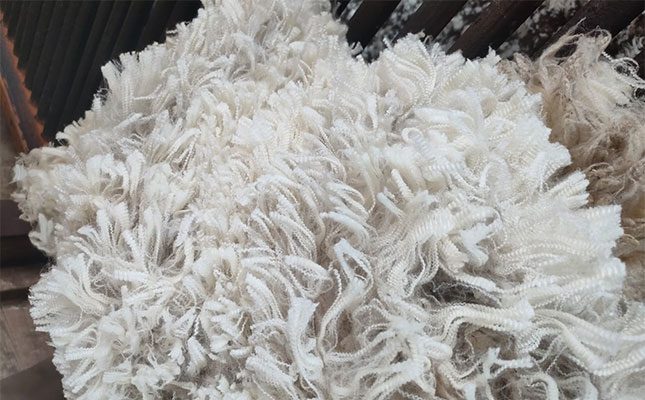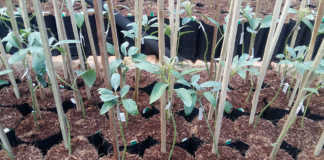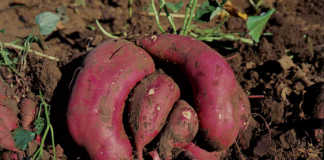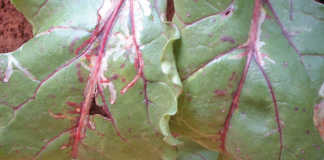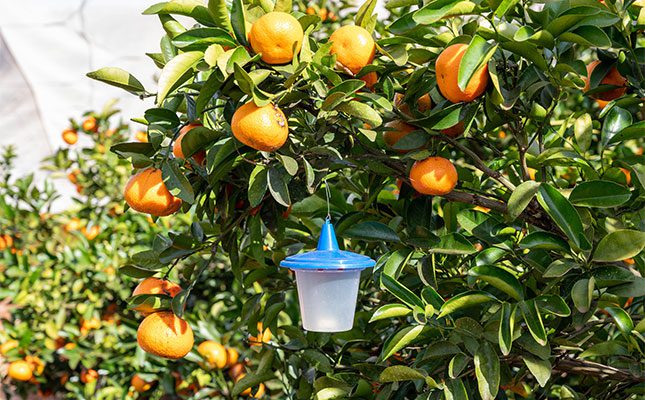
Photo: Magda du Toit
Integrated pest management (IPM) is an ecosystem-based approach to crop protection that combines multiple strategies to control pests in an economically viable, environmentally sound, and socially responsible manner. It focuses on prevention, monitoring, and targeted interventions.
In this talk during the Bio-Alliance SA-Brazil 2025 Conference, Martin Booyens, technical specialist for biological solutions at InteliGro, focused on the critical principles of effective pest management strategies and how farmers can initiate biological management solutions on their farms.
“Before attempting to use a biological product, farmers must determine how they can ensure effective pest prevention strategies,” he advised.
According to Booyens, farmers should ask and get the answers to the following questions:
- What am I looking at?
- What should I be looking for?
- Where should I start implementing my programme?
- Which biological solutions will address the problem?
- When should I start implementing the programme?
- How do I ensure effective crop protection strategies?
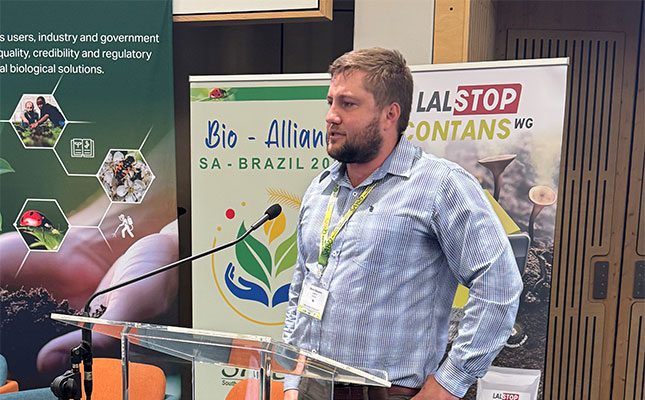
In his presentation during the Bio-Alliance SA-Brazil 2025 Conference in Pretoria, hosted by the South African Bioproducts Organisation and the Embassy of Brazil, Martin Booyens, technical specialist for biological solutions at InteliGro, outlined the steps for implementing an integrated pest management system.
He pointed out the following key considerations to support the implementation of an effective IPM programme:
- Crop selection: choose resistant varieties.
- Rotation: use alternative crops and crop rotation systems to disrupt pest cycles.
- Biopesticides: apply natural pest control methods.
- Irrigation: optimise water use.
- Nutrition: ensure balanced soil nutrients and healthier plants better able to handle biotic stress.
- Habitat protection: maintain beneficial insect and microbial ecosystems.
- Understand the pest: know its biology and ecology.
Battling an ‘invisible foe’
When it comes to plant diseases and pests, farmers may often feel they are fighting an invisible enemy. Knowing what is happening in your crop may, however, prevent the invisible from becoming the unbeatable.
“One of the pillars of an integrated crop protection programme is the effective monitoring of the crop, pest, and beneficial insects. Early detection and accurate diagnosis are of the utmost importance,” Booyens added.
He highlighted the following identification essentials:
- Understand pest diversity: recognise the challenges of managing diverse pests.
- Identify all organisms: include visible and hidden pests, as well as beneficial insects.
- Collect samples effectively: ensure correct identification and accurate analysis.
- Recognise misidentification risks: avoid errors that could compromise management decisions.
Importance of scouting
The foundation of any IPM programme is regular monitoring. Farmers must scout their fields frequently to identify the pests that are present, their population levels, and whether intervention is necessary.
Speaking to Farmer’s Weekly at the congress, Nadine Botha, technical field services and marketing representative at Insectec, cautioned that insect damage can occur throughout the growing season.
“Seedlings and young trees are most at risk. When crop damage is noticed, one of the first steps should be to determine if further damage is likely to occur. A monitoring programme throughout the season enables farmers to manage their practices and prevent serious crop damage.
“Correct identification of insect pests, as well as understanding their life stage, is necessary to avoid economic damage. This also informs the choice of control method and supports the survival of the biological agents,” she explained.
According to Booyens, the following aspects should be considered while scouting:
- Type of insect, disease, or weed
- Number of plants affected
- Severity of damage on individual plants
- Total area affected
- Damage threshold for further action
- Weekly observations for timeous identification of issues and infestations
- Accurate record-keeping: scouting apps can help capture detailed data
- Pest monitoring: use pheromone traps and record pest or disease levels as percentages
- Collaboration with expert advisers for support and training
“After treatment, it is critical to revisit the crop and continue monitoring it to ensure the measures taken have been successful,” he stressed.
Booyens added that the person responsible for scouting should be outdoor-ready, observant, agile, a quick learner, diligent, and have good eyesight.
“Always carry a camera or phone with a good camera, a magnifying glass, field microscope, container, and knife, and keep the phone number of an expert handy,” he advised.
A multi-approach strategy is essential when using biological control measures. “Record-keeping cannot be overemphasised. It is crucial to maintain detailed logs of scouting results and pest management efforts,” Botha noted.
Michelle Lesur, CEO of Andermatt Madumbi, pointed out: “Biological solutions are no longer an alternative; they are an essential pillar of IPM. Every farmer needs them in their toolbox. And it’s not just about environmental responsibility but smart economics as well. Resilient crops mean fewer losses, better quality, and improved market access.
“By combining biologicals with other IPM strategies, growers can achieve cost-effective pest control while meeting global standards for residue-free produce required by our export markets.”
She added that the use of biological products as a more environmentally friendly way of managing pests is increasingly required by both local and export markets.
How to combine bioproducts with IPM
According to Booyens, the following aspects should be included when incorporating biological control measures in an IPM programme:
- Use pheromone traps to disrupt mating cycles.
- Prioritise sanitation: remove rotten or fallen fruit weekly.
- Apply mechanical or physical barriers and traps to control certain pests.
- Manage weeds within the crop, as they can harbour both pests and beneficial insects.
- In addition to beneficial insects such as natural predators, consider bacteria and fungi.
- Incorporate selective chemistry where appropriate: use targeted pesticides for specific pests at crucial points in the crop cycle.
Regarding the use of selective chemistry in IPM programmes, it is important to remember that not all crop protection products work well together.
“Some combinations can reduce the efficacy of the individual products or have an effect on the microbial activity and efficacy in the soil, stress beneficial insects, or cause unexpected pest flare-ups. This is why compatibility and selectivity are crucial,” Jaco van Zyl, portfolio manager for row crops at BASF, cautioned.
“Use the registered labels or compatibility charts for information on tank mixes and application methods. It is of the utmost importance to read and follow the instructions on the product label before use,” he emphasised.
Van Zyl said some general rules for mixing substances include:
- Do not make unregistered tank mixtures.
- Pay attention to any specific water-quality requirements.
- If a product label states that one pesticide is compatible with another, it does not automatically apply to all trade names containing those active ingredients. Different formulations can behave differently.
- Consult all labels of the tank-mix partners and follow the most restrictive recommendations.
He also stressed that farmers must ascertain when crop protection substances, especially biological products, were produced.
“Check the date of manufacture and/or expiry to ensure the purchased product will perform as expected. Do not apply an expired product,” he explained.
Van Zyl pointed out that all BASF inoculant packs include highly specialised, time-temperature indicator (TTI) labels inside the packaging cartons. Each TTI label has a viability indicator sticker that responds to time and temperature.
According to Booyens, each product choice impacts the wider biological ecosystem. He pointed out the following:
- Certain insecticides can disrupt predator–prey balance and trigger secondary pest outbreaks.
- Some fungicides and tank additives may suppress beneficial microbes or interfere with biocontrol agents.
- The quality and pH of spray water can influence the stability and performance of biological products.
- Growers and suppliers should work closely with IPM and biological specialists to develop programmes that are both effective and biologically sustainable.
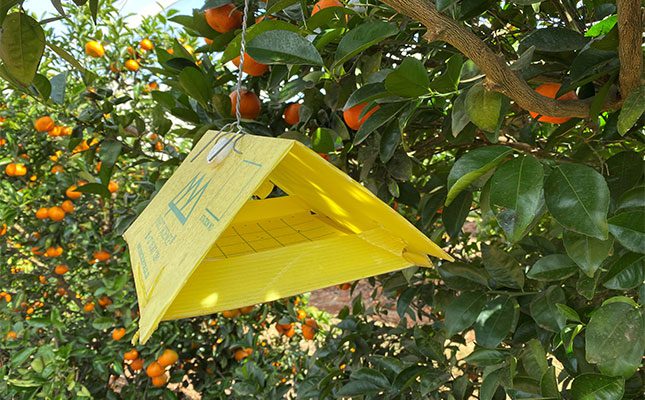
By capturing pests, insect traps contribute to species identification, threshold determination, and the development of targeted treatments, fostering precision in integrated pest management programmes.
Damage thresholds
Establishing damage thresholds is crucial for effective pest management. Booyens said farmers should always assess the economic risk to determine the cost-effectiveness of control measures.
“Monitor visual damage and adjust flexible thresholds accordingly. Some insects can be tolerated, while others cannot. Diseases are more severe and should always be treated preventatively. Record-keeping is extremely important. Notes collected over multiple seasons become a vital resource for making informed decisions,” Booyens pointed out.
He advised that once a farmer decides to incorporate biological control methods, they should begin with a small and, if possible, isolated block.
“Start small and test only one or two biological solutions at a time. Keep trials isolated or at least well separated, especially when working with living organisms like beneficial insects. Remember, they move freely and can easily drift into neighbouring plots.”
He mentioned that a single successful season is not enough to draw conclusions: “Repeat trials for at least two consecutive years under varying conditions before scaling up commercially.”
According to Booyens, other essential considerations that can influence the survival and performance of beneficial organisms, as well as the timing of applications, include:
- Documenting temperature, humidity, soil pH, moisture, and texture.
- Managing soil pH and calcium carefully, as overcorrections can disrupt microbial diversity, reduce nutrient availability, and increase sodium accumulation, leading to soil compaction and poorer water and oxygen infiltration.
In summary, Booyens gave the following advice on the choice of biologicals to use:
- Effective use of beneficial insects:
- Timing: release insects under optimal conditions.
- Methods: select the most appropriate release technique based on the insect, target pest, crop, and area.
- Compatibility: ensure synergy with the existing soil microbiome.
- Utilising beneficial bacteria:
- Soil health: essential for optimal bacterial growth and activity.
- Viability: colony-forming units indicate bacterial strength.
- Compatibility: ensure synergy with the existing soil microbiome.
- Utilising beneficial fungi:
- UV sensitivity: apply at night to protect fungi from harmful UV exposure.
- Soil pH: fungi thrive in lower pH ranges.
- Viability: maintain healthy spores for effective application; ensure optimal transport conditions.
- Moisture: adequate levels enhance fungal growth efficiency.
- Utilising beneficial viruses:
- Timing: apply during periods of low UV for optimal effectiveness.
- Persistence: ensure the virus remains effective in crops; fast-growing crops may require additional coverage strategies.
- Compatibility: only mix viruses with compatible tank mixes.
Finally, Booyens emphasised that farmers should only collaborate with reputable companies whose crop advisers are certified and properly trained.
“Make sure the company provides on-farm support to help you on your journey and ensure you apply biological crop solutions effectively for improved yields and sustainable practices,” he concluded.
For more information email Martin Booyens at [email protected], Nadine Botha at [email protected], Yolande Kruger at [email protected], and Mary Willemse at [email protected]. Visit agro.basf.co.za.

